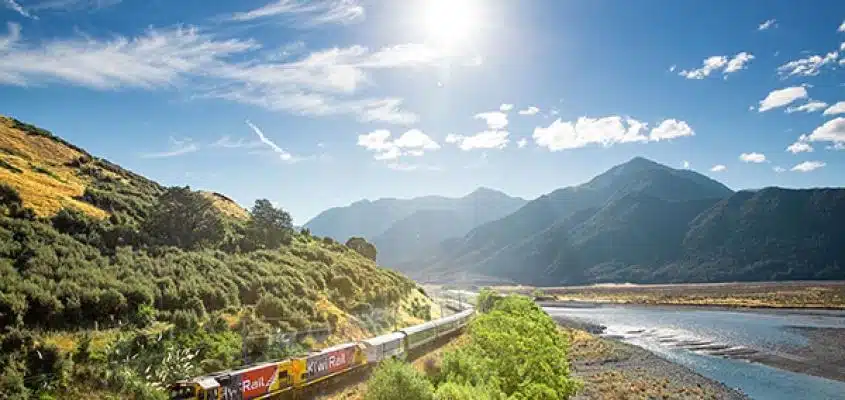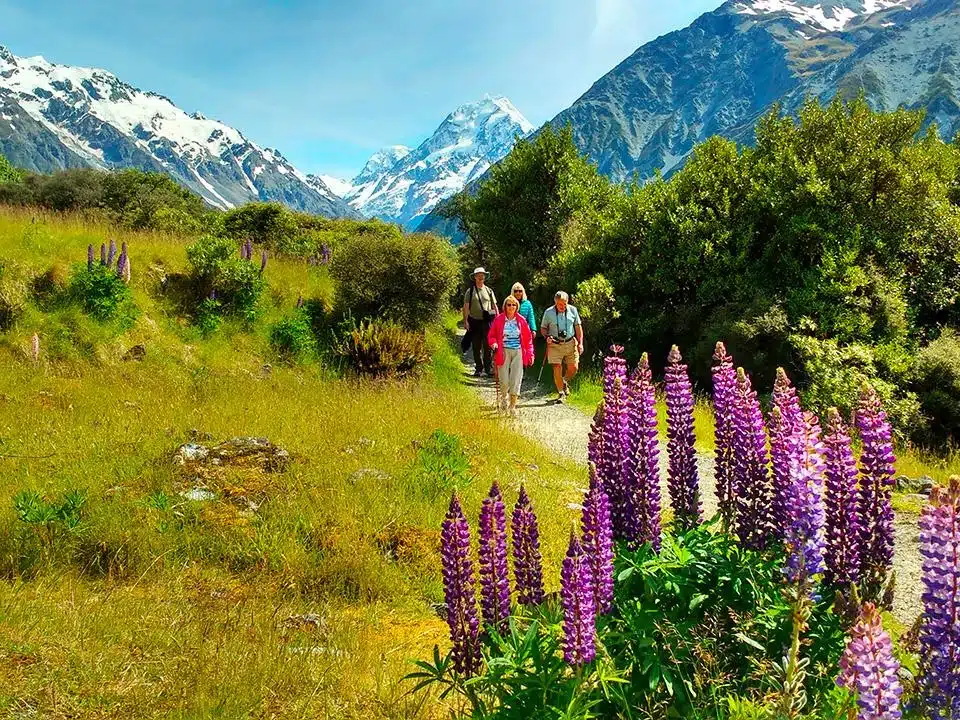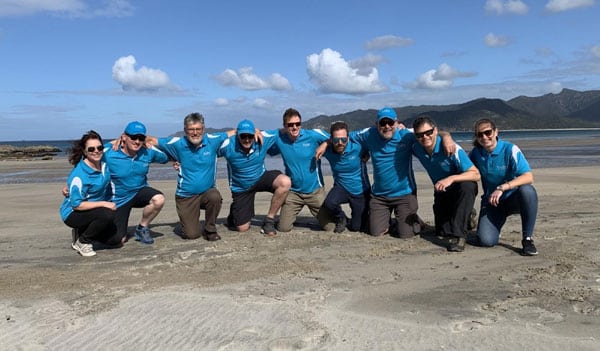Here’s a handy guide for anyone planning a trip to New Zealand to help you work out your travel budget, including a summary of flights, accommodation, getting around, food and activities.
If you’re planning a dream trip to New Zealand and have finally decided that now is the time, you’ll want to figure out one very important thing, how much will my trip cost?
But we can’t be everything for everyone, so this article is especially for people who have been dreaming about visiting New Zealand for a long time and want to travel in comfort. We don’t mean private lodges and helicopters everywhere but comfortable 3 – 4 star hotels, lots of nice restaurant meals and some special experiences along the way, and maybe a few gifts for friends and family back home.
We’ll break down the major items you need to budget for (your flights, accommodation, transport, meals and activities) and give you some real examples of how much you can expect to pay for these.
This is not a budget travel guide to New Zealand, if you’re a backpacker looking to find out how much your trip will cost, we recommend this article on the BackPacker Guide website.
But if you’re someone who has New Zealand on their bucket list and wants to see all the famous places you’ve heard about, enjoy some great food and wine on the way and join the odd guided tour or activity, then read on.
The other point we’ll make up front here is that most of our readers are in North America, so we’ll present all the information in US dollars and focus on ticket prices from the main North American airports.
Important note: In the post Covid-19 world travel prices are in a state of flux and can change at any time. We’ve done our best here to keep this information updated and relevant but please double check any prices before you make any bookings.
Getting here – How much does an airfare to New Zealand cost in 2023?
This is the first (and probably most important) part of your New Zealand trip, you need to get here. As most of our readers will be travelling by air, this is what we’ll focus on, the cost of air travel to New Zealand.
As many of you will know, airfares change all the time, so it’s hard to give an exact guide to prices that will be accurate. So we’ve chosen a couple of dates and done some searches on Expedia for options.
The purpose of this information is to give you an idea of the range of costs. We recommend looking for yourself on a booking site like Expedia or talking to your travel agent when you’re ready to start planning your trip.
These are for return travel, for 1 adult for a 14 day stay. We’re showing the most direct route, ie, a nonstop flight where there is one or the minimum number of stops otherwise.
Prices shown are all in USD for travel in peak season (Jan/Feb)
Please note that when you book a MoaTrek tour, we can put you in touch with one of our trusted partners who can arrange flights for you.
To Auckland from Los Angeles
- Economy: $1,594
- Business: $9,274
To Auckland from San Francisco
- Economy: $1,734
- Business: $9,334
To Auckland from Vancouver
- Economy: $1,772
- Business: $5,900
To Auckland from Houston
- Economy: $2,126
- Business: $10,220
To Auckland from Chicago
- Economy: $2,126
- Business: $11,223
To Auckland from New York
- Economy: $2,364
- Business: $12,400
To Auckland from Honolulu
- Economy: $945
- Business: $6,497
The flights we present here are the direct connections. You can find cheaper flights if you travel on a multi stop itinerary, but we’re assuming you value comfort so we’re focusing on the ones that get you there the quickest.
See this article for a handy guide on flight times from North America to New Zealand.
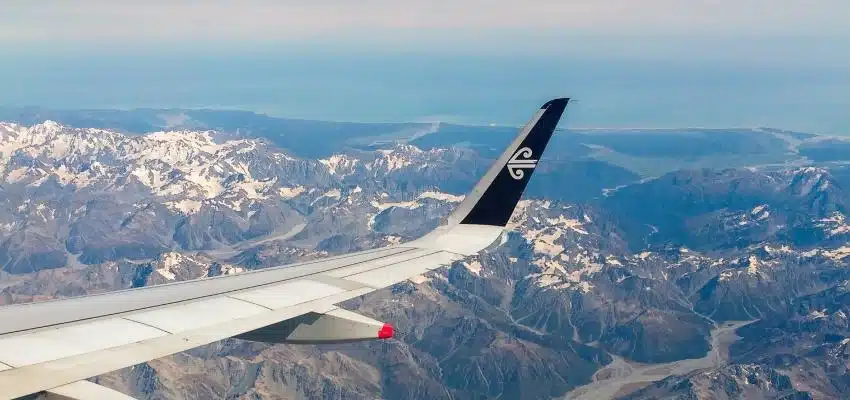
Where to stay – How much does accommodation cost in New Zealand?
As we’re writing this for travellers whose days of roughing it in multi share dormitories are behind them but haven’t yet won that major lottery to fund a to New Zealand, so we’ll focus on accommodation somewhere in the middle, three and four star accommodation.
Firstly, a quick guide to what accommodation is available in New Zealand. if you’re coming from North America it’s going to be pretty similar to what you’re used to back home, with one notable difference.
Hotels in New Zealand
Hotels are hotels are hotels. We all know what hotels are, word association probably conjures up large buildings with lots of rooms. Hotels in New Zealand are similar to hotels in North America, but the rooms are probably a bit smaller. There are international brands like Holiday Inn, Hilton and Hyatt here in New Zealand, so you know what you’re getting.
See a sample of our favourite New Zealand hotels here.
Motels in New Zealand
Our motels may be a little different than you’re expecting. If you’re in the USA and you think of motels, you might think of a strip mall type place or a Motel 6, maybe not the kind of place you’d stay on a dream vacation.
Motels in New Zealand can be really nice! Some of them are even rated 5 star, and the rooms are beautifully appointed and often larger than hotel rooms.
The main difference is that motels in New Zealand don’t usually have an onsite restaurant, they will often provide breakfast or have a simple breakfast restaurant but for a full service dinner you’ll have to go off the premises.
The origin of Motels in New Zealand is the same as in North America, “Motor Hotels”, so they are set up for people driving themselves. Often motels have really convenient access from carparks to rooms, which can be much appreciated if you are travelling with a bit of gear or never quite master the art of the perfectly packed suitcase and find yourself using your car as extra storage!
Don’t be put off by the word “motel” in New Zealand, check the pictures and reviews and make your own decision.
Serviced Apartments in New Zealand
Most people are familiar with serviced apartments and you’ll find these in all the main cities and traveller destinations in New Zealand, but not in smaller destinations.
To give you an example, you’ll find serviced apartments in cities like Auckland, Wellington, Christchurch and Queenstown, but not in places like Te Anau or the West Coast of the South Island.
Serviced apartments are usually in larger buildings and are similar to hotels, except for a couple of key differences.
Serviced apartments always have kitchen facilities but there may not be a restaurant on site. Services like reception and room service will be at a lower level than hotels.
For detailed price breakdowns, view this guide by Budget Your Trip.
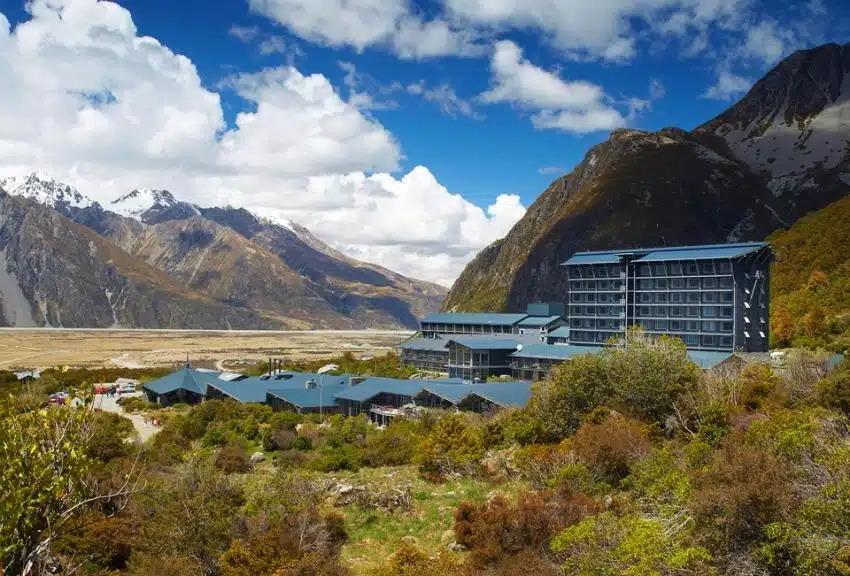
Getting around – How much does transportation cost in New Zealand?
The third “must have” of any trip is transport, you need to get around from A to B to C, so what are your choices and how much do they cost?
Your options for travelling around New Zealand are public transport (mostly Intercity buses but some rail), driving yourself or taking a tour.
You can also fly domestically too, we’ll add a bit more info about that below.
As with anything, prices will vary. For up to date pricing and availability look at Thrifty Rental Cars.
The other option is to take a tour around New Zealand and leave all the driving and planning to someone else, like MoaTrek!
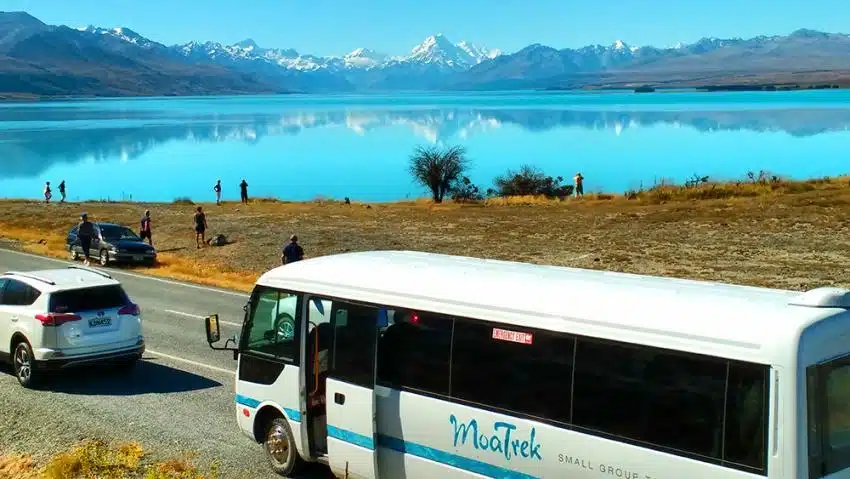
How much does flying domestically in New Zealand cost?
New Zealand has so many interesting little places to poke your nose into that most people want to travel overland and do lots of exploring.
We definitely recommend this too, but we know sometimes we don’t always have as much time as we like on holiday and if this is the case then taking a domestic flight or two during your trip can really help.
The domestic air routes in New Zealand fall within two main groups, on the main trunk line and off the main trunk line.
The main trunk line (as Kiwis call it) is made up of Auckland, Wellington, Christchurch, Queenstown and Dunedin). These are the main towns and cities and there are lots of flights between these airports operated by both Air New Zealand and Jetstar. There are more flights to choose from and (some) price competition on the routes.
Outside of these main centres there is less competition and fewer flights to choose from, which means it’s more expensive, for example, places like Nelson, Napier, Whanganui and Taupo. We call this the regional network.
To make it easier when you’re here, we recommend you stick to flying the main routes, this means you’ll keep prices down and in the event of weather related delays or cancellations (not uncommon in New Zealand) you’ll have more alternatives to keep you on your way.
Just like in your home country, flight prices change a lot depending on many factors. For this example, we’ve searched for flight prices on a single day in January, for a one way fare for a single adult.
The purpose of this is to give you an idea of how much airfares in New Zealand are for planning purposes of your trip. These fares are for one adult on a fully flexible fare, booking about 10 weeks in advance.
Cost of domestic flights in New Zealand
Ticket prices change all the time, there are often sales or deals on offer by airlines. For updated prices take a look at either Air New Zealand or Jetstar.
How much does rail travel in New Zealand cost?
Many visitors are surprised to learn that there isn’t an extensive rail network in New Zealand, it’s not like Europe for example, where trains go almost everywhere and it’s really easy to travel all over the country on trains.
But there are some wonderful rail journeys in New Zealand and they’re easy to include in your trip, here are the main ones.
The Northern Explorer – Between Auckland and Wellington
The Coastal Pacific – Between Picton and Christchurch
The TranzAlpine – Between Christchurch and Greymouth
If you trace these journeys on a map you’ll see that they take you across a good part of the country and include many of the places you probably want to visit.
They combine nicely with the Interislander ferries too so if driving is not your thing take a train. For more information on rail travel in New Zealand visit the Great Journeys of New Zealand website here.
*Includes the Interislander Ferry between Picton and Wellington.
These are indicative fare costs and would involve travelling over several days to get from Auckland to Christchurch, for example.
How much does food cost in New Zealand?
When you’re a traveller, either in your own country or overseas, you are almost always required to spend quite a bit of money on food. Travelling can be hungry work so your daily meals and snacks are an absolute must.
We’ll include some updated information in this article and add some of the staples you need while travelling, like bottled water and chocolate. These are travel essentials, we’re sure you’ll agree!
The Global Big Mac Index, in USD for 2023
Country
New Zealand
Australia
A selection of common food costs in New Zealand in 2023
Item
Cost
A selection of takeaway items from the supermarket a traveller may need
How do these prices compare with what you’re used to back home? For many visitors to New Zealand it’s these everyday items that seem expensive. Sure, paying high prices for luxury or once in a lifetime experiences is one thing, but for things you need it can sting.
Item
Price in NZD
See more
Chocolate
Tips for keeping costs down for essential items when you travel to New Zealand
- Buy what you can before you leave home, but only if it’s light!
- Stock up on essentials in the main centres, places like Auckland, Wellington and Christchurch have more choice and generally lower supermarket prices than places like Queenstown and the West Coast.
- Share items with travelling companions. If you can split an item between a few of you, that’s a great way to save. Something like sunscreen is a great example of this.
- Bring a portable water bottle. Water in the taps (faucets) is good to drink all over New Zealand so instead of buying bottled water bring your own bottle and fill up on your way around. Not to mention reducing plastic waste too!
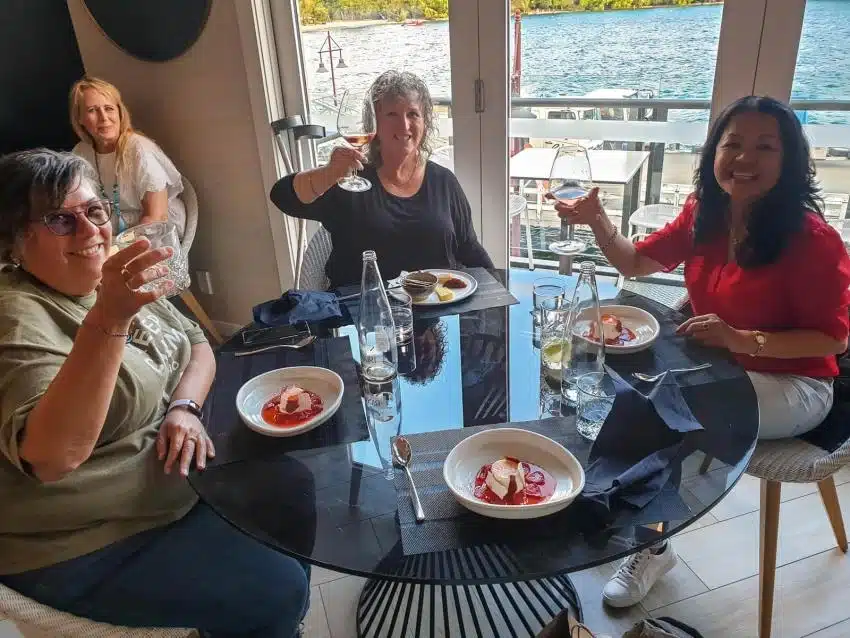
How much do activities in New Zealand cost?
We’ll leave the best till last. All the other items we’ve covered so far are the “essentials” of your trip, the basics you need to make your trip happen.
For many people, coming to New Zealand is all about having amazing experiences in our wonderful countryside, we’re world famous for activities like bungy jumping, jet boating, glacier hiking and wine tasting. (Yes, we consider wine tasting an activity in New Zealand!)
Everyone will have their own preferences for which activities you do while you’re here, so in the interest of democracy we’ll take the lead on this from TripAdvisor. We’ll look at the most popular activities in Auckland, Rotorua, Queenstown and Christchurch, and a few other favourites to give you an idea of how much activities cost.
Cost of popular activities in New Zealand
Activity
Adult Price
NZD $290 full day tour
NZD$140 half day tour
See our recommendations for activities to guests on our Kakapo 21 Day North and South Island Tour.
From Dolphin and Whale Spotting in the North to Jetboating and Glacier Hiking in the South, there’s something for everyone.
We hope you find this guide useful preparation for your trip to New Zealand as we know figuring out a travel budget can be tricky.
Just researching all the options for your trip is time consuming and often leads to more questions than answers. One of the things lots of people on our small group tours tell us is that they love having everything taken care of with just one booking!
We know how valuable your time is, so let us take care of all the bookings and hassles and you just start looking forward to your trip.
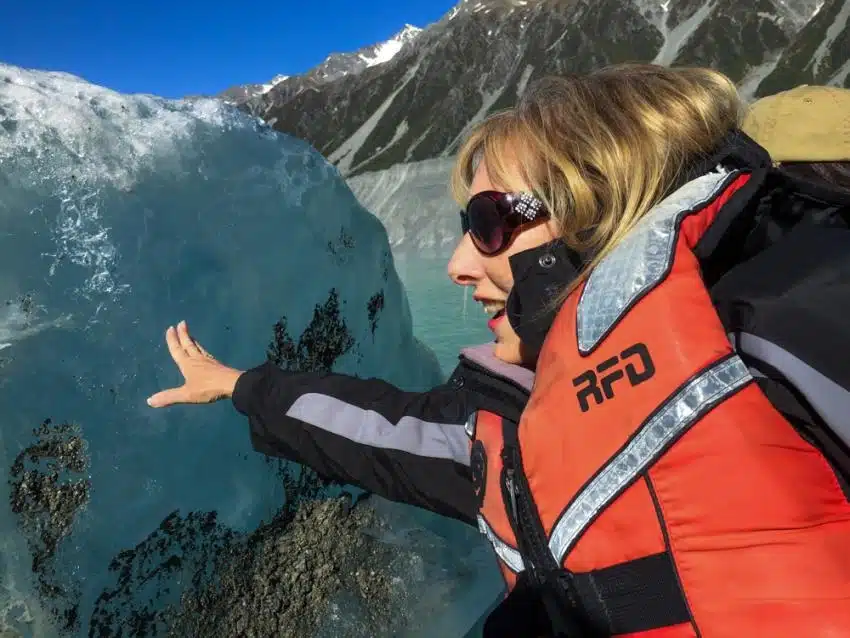
More New Zealand travel articles you will find useful
Do I need to tip in New Zealand?


